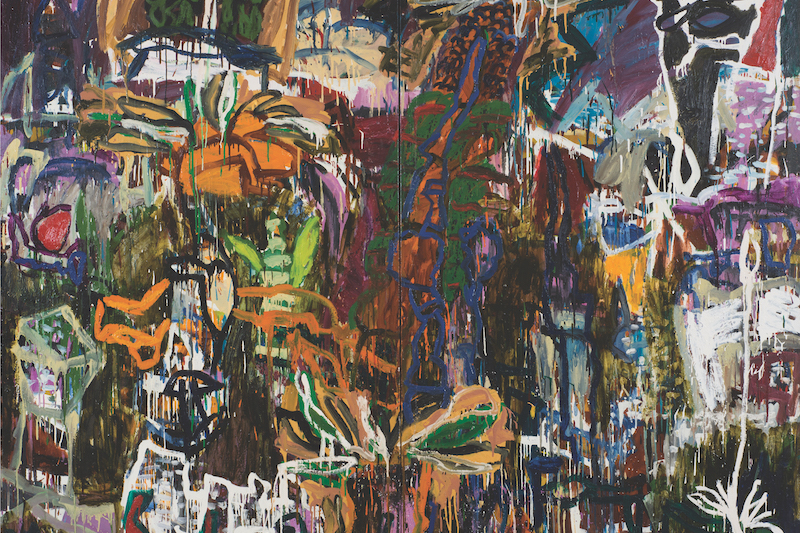Suzanne Archer: Blaze of Glory
The extraordinary painterly density, dynamism and life captured in Suzanne Archer’s work has positioned her firmly within the canon of great Australian painters.
Words: Rex Butler
SUZANNE ARCHER’S EXHIBITION with Nicholas Thompson Gallery at Sydney Contemporary this year marks the 50th anniversary of her first ever commercial exhibition at Clune Gallery in Potts Point, Sydney, in 1969. Archer had originally arrived in Australia in 1965 as a 19-year-old, after studying at the Sutton and Cheam School of Art in England. Almost immediately, she won the Shoalhaven Drawing Prize in 1966, the Woollahra Art Prize in 1967 and rather poignantly, as listed in her CV (for who even remembers there was such a thing?), the Easter Show Competition (Modern Painting Section) in 1968.
1969 was the year Archer received her first serious critical attention with her work included in Mervyn Horton’s important Present-Day Painting in Australia, published that year. The book is a listing of some 114 then-contemporary Australian painters in alphabetical order, with each getting a one-page artist statement and the reproduction of a single work. Archer is in fact the first artist included in the book – immediately preceding David Aspden, Yvonne Audette and Sydney Ball – and the work of hers reproduced is the acrylic and paper collage Country of Ripples 2 (1969). The piece looks as much as anything like a Rosalie Gascoigne, with its cut-up pages of advertisements from newspapers divided into overlapping planes by the occasional stroke of black paint. Archer in her statement speaks of “the painting developing through itself; I make decisions. It is a process of elimination and addition, constructed of the definitive and the ephemeral”.
But one of the things that makes Archer such a strong painter, at least for me, is that the real strategy of her work is more like endless addition, leading to a kind of supersaturation when it appears it must simply burst apart with all of the content, all of the colours and all of the mark-making stuffed into it. It is certainly this that drives the progression of her style, at least up until the late period paintings of skulls and skeletons she began sometime around 2103 when, after a period drawing in the dissecting room of the Veterinary Science Department at the University of Sydney, she broke her pelvis and became aware of the fragility of the human body.
Until this stripping down to final things, however, what characterises Archer’s work by contrast is an extraordinary painterly density. Take, for example, such works on exhibit here as Blaze (1990), Big Bad Banksia Men (1993) and Ferns (1994). They are certainly responses to the subtropical bush where she lives in Weddesrburn on the south-west fringes of Sydney, with its moist undergrowth, thick shadows and rich black soil. But with their successive layers of blue, pink and violet, their swirling skeins of white, one on top of the other until the background is completely covered, it is as though Archer is trying to fill her work with all of the world, to produce a life within the painting that would match that which she sees during her daily walks through the forest.
Of course, it’s possible to compare her work to another Australian artist of approximately her generation, Elisabeth Cummings, and more distantly to that of her husband, David Fairburn. Other reviewers have even on occasion compared it to that of Ian Fairweather, and if we wanted an international reference we might even point to the Canadian post-war Tachist Jean-Paul Riopelle. But to me, the truly productive comparison with Archer – to take us back to Horton’s book – would be to Gareth Sansom. Sansom was another of the younger generation of artists selected by Horton, and he is represented by the painting Dog Fight (1966), a scrappy, half-drawn, half-painted image of two First World War airplanes duelling in the air. However, Sansom, like Archer, seeks to put the most incongruous elements together in his paintings (perhaps even more so), overburdening them to point of collapse. Both painters kick against the idea of stylistic unity, daring us to find their work simply incoherent. But try as they can, they fail to make it so. They are simply too good at what they do.
This article was originally published in Sydney Contemporary Special Issue Art Collector, 2019.











